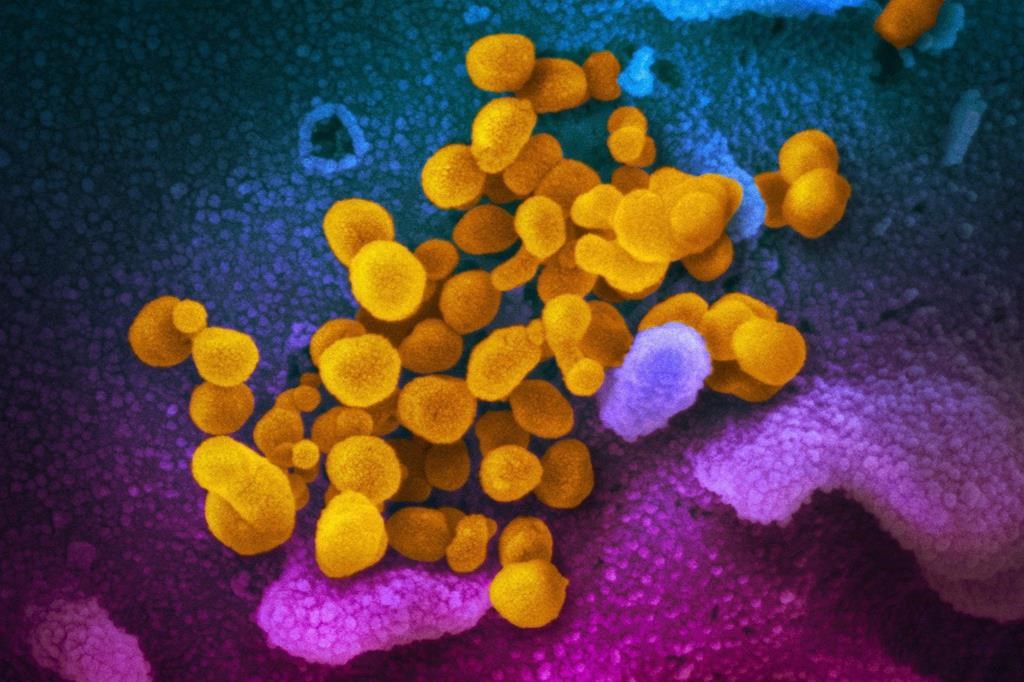COVID-19 has changed. If you’re vaccinated and not immunocompromised, the disease is usually not as deadly as it once was.

But it still poses risk. With statistics changing and new variants emerging, it can be confusing to figure out what exactly that risk is.
One of the reasons for this, a physician and epidemiologist told Global News, is a symptom not caused by the disease but by living in the pandemic — that it’s not how the virus has changed, but how we have.
“We’re not into a time anymore of nobody having protection and therefore needing to mandate masks and vaccines in order to prevent a complete overwhelming of our health system and massive deaths,” said Dr. Cory Neudorf, senior interim medical health officer with the Saskatchewan Health Authority.
“But we’re still seeing a continued (and) fairly high level of (hospital) admission and deaths that we’ve become a bit numb to.”
He said some of the confusion come from other viruses circulating, like rhinovirus (which can cause the common cold) and influenza, and the fact healthcare providers have changed how they test for COVID-19.
Whereas health authority personnel used to test everyone who visited a hospital, testing is now restricted to people who exhibit respiratory illnesses.
Two other doctors told Global News that in most cases testing doesn’t necessarily affect how they treat the patient.
“If it looks viral and behaves viral, then we can assume it’s viral,” said family physician Dr. Marlys Misfeldt, adding that she now typically treats patients with COVID the same way she treats patients with severe influenza, sometimes referring them to hospital.
She stressed that influenza and COVID are still serious ailments and said she’s had patients require intensive care and die from influenza. She said still gets anxious when an immunocompromised patient contracts COVID.
So many respiratory illnesses are circulating, Misfeldt believes, because fewer people are wearing masks.
And adding to the blurry image of COVID, she also said it seems like no patients have and use rapid tests anymore.

Get breaking National news
Dr. Ben Thomson, head of pediatric emergency medicine at the University of Saskatchewan and a pediatric emergency room doctor, said the focus is on viral illness, not testing.
“Most of the time, when somebody comes to the emergency, if they’re sick with a viral illness, we don’t strictly need to test them for which virus it is.”
He said the ERs are no longer swamped like they were weeks ago. Now he said they’re closer to a usual busy winter.
And while he said staff are still seeing a lot of COVID, they’re mostly treating patients for Respiratory Syncytial Virus (RSV).
The latest provincial respiratory illness report shows preschool-age children have the highest rate of RSV positivity at 14.5 per cent.
But out of all the respiratory illness the report tracks, COVID-19 caused most hospitalizations.
While test positivity and hospitalizations from COVID decreased, more people died in the past two weeks compared with the week prior.
If the biweekly numbers don’t help illuminate the state of the pandemic, COVID-19 Resources Canada puts out a report with a “hazard index.”
The latest report places the province’s COVID hazard level at “very high.”
The rating is based on measures like wastewater, hospital and intensive care admissions and deaths from COVID in each province.
The report’s author, infectious disease researcher Tara Moriarty, said the purpose is to provide information.
“What people really want is an idea of what it’s likely like in the current weeks so that they can make decisions about what we should or shouldn’t be doing,” she said, speaking from French River, Ont.
“We take the trends that have been happening in the previous few weeks and we forecast forward by about a week.”
She said Saskatchewan’s “very high” rating will likely increase in coming weeks, with the latest subvariant XBB.1.5. now present in the province.
Given that the World Health Organization believes XBB.1.5 appears to be the most transmissible yet, and that the report places other province’s hazard levels much higher than Saskatchewan’s (Ontario and Quebec are both “severe,” and Novia Scotia’s numeric rating is off the 10-point scale), Moriarty said she expects hospitalizations, ICU admissions and deaths again to increase.
But she said the impact may be blunted because so many people in Saskatchewan were infected in previous waves.
“It’s not that Saskatchewan will avoid it, it’s just that it may not be quite as intense as it is out east.”
But what does that mean for your risk level?
“There are times when you should be more personally interested in (the pandemic), but also times when we need to respond as a community to try and get the rates of infection down,” Neudorf said.
“And that’s where we are right now.”
He said the province’s hospitals are still seeing “fairly high” admissions from COVID and other ailments.
“The biggest problem has been the number of patients who are unwell enough that they need to be admitted into hospital, taking up a lot of hospital beds because of oxygen needs or heavy breathing,” Thomson said.
Neudorf and Thomson both said they expect a surge from XBB.1.5 spreading through Saskatchewan.
What helps insulate people from the risk, and changing risk, is the fact safeguards remain the same. All four health experts to whom Global News spoke said people should get vaccinated and wear masks.
“If you’re sick, it doesn’t matter how you’re testing, stay home,” Neudorf said.
“I’m still wearing my mask when I’m in enclosed spaces. So I still treat everybody as if they’re positive,” Misfeldt told Global News.
“Life can’t stop,” Thomson said, “but people should be prudent.”








Comments